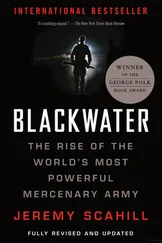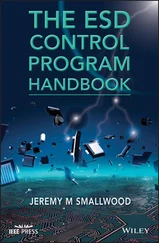Two days after the incident, on June 13, 2008, Vice Admiral William McRaven assumed command of JSOC from General McChrystal, inheriting the role of running the hunt for bin Laden and other HVTs. The botched raid that killed the Pakistani soldiers clearly didn’t faze him. McRaven, a former Navy SEAL team leader and McChrystal’s deputy commander at JSOC, began advocating for wider latitude to strike in Pakistan. In July 2008, President Bush approved a secret order—which had been the subject of much debate among the CIA, State Department and Pentagon—authorizing US Special Ops Forces to carry out targeted kill or capture operations. Unlike the early arrangement with President Musharraf, the US Special Operations Forces would not be working alongside Pakistani forces and they would not seek permission from Pakistan’s government before conducting strikes on Pakistani soil. “To soothe the worries of U.S. Ambassador Anne Patterson about the mounting civilian deaths from JSOC raids in other countries, commandos brought her a Predator console so she could witness a raid in real time,” according to reporters Dana Priest and William Arkin. In August 2008, Musharraf, long a malleable US ally, resigned from office under threat of impeachment. JSOC’s forces almost immediately began testing his successor. As a Special Operations source who worked with McRaven at the time told me, “Bill rapidly expanded operations” in Pakistan.
On September 3, 2008, two helicopters carried a team of JSOC Navy SEALs across the Afghanistan-Pakistan border. Backed by a high-powered AC-130 Spectre gunship, with the capacity to do serious damage, they descended on a village near Angoor Adda, a small Pakistani mountain town in South Waziristan, near the Afghan border. The helicopters landed quietly, and more than two dozen SEALs, equipped with night-vision goggles, took up positions around the home of a fifty-year-old woodcutter and cattle herder. Some reports suggest that the Special Ops team had intel that an al Qaeda leader was inside. The Washington Post reported that it was “the first US ground attack against a Taliban target inside the country.” In any case, once in position, the SEALs executed their raid.
What happened after the first shots were fired remains in dispute. According to US officials, “about two dozen suspected Qaeda fighters” were killed in “a planned attack against militants who had been conducting attacks against an American forward operating base across the border in Afghanistan.” But according to local villagers, the SEALs opened fire, killing Payo Jan Wazir, the home’s owner, along with six children, including a three-year-old girl, a two-year-old boy and two women. When Payo Jan’s neighbors heard the gunfire and ran out to see what was happening, villagers said, the SEALs opened fire on them, killing ten more people. The Pakistani government said that all of the dead were civilians. The United States maintained they were al Qaeda militants. Pakistan’s Foreign Ministry summoned Ambassador Patterson. In a statement it denounced the operation, calling it a “gross violation of Pakistan’s territory” and a “grave provocation,” alleging the raid had caused “immense loss of civilian life.” The Foreign Ministry said it was “unfortunate” that US forces had “resorted to cross-border use of force against civilians,” asserting that “such actions are counter-productive and certainly do not help our joint efforts to fight terrorism. On the contrary, they undermine the very basis of cooperation and may fuel the fire of hatred and violence that we are trying to extinguish.”
After years of being directed to focus most of its resources on Iraq, JSOC was finally getting its chance to hit in a more concerted way in Pakistan. As it turned out, Rumsfeld’s vision of the world as a battlefield was more fully realized after he left than when he was in power. His departure ushered in an era in which America’s most potent dark side forces pivoted from Iraq to the US twilight wars in South Asia, Africa and beyond.

22. “Every Step Taken by the US Benefited al Shabab”
SOMALIA, 2007–2009—While much of the media focus on Somalia in early 2007 was on the Ethiopian invasion and occupation, JSOC was focused on hunting. It had quickly set up its makeshift “lily pad” at the discreet US base in Manda Bay, Kenya, in early January and was waiting to pounce. US war planners wanted the Ethiopian invasion to force the Islamic Courts Union leadership to flee the capital and head for strongholds, especially along the Kenyan border, where Task Force 88 could take them out. JSOC had AC-130 gunships positioned covertly at an airbase near Dire Dawa, Ethiopia, that could pummel retreating ICU leaders and foreign fighters, enabling follow-up JSOC teams based at Manda Bay to enter Somalia and finish the job, if necessary. US policy had boiled down to one mentality in Somalia: find, fix and finish. “It’s kinetic, hard kill,” asserted Malcolm Nance. “If it’s not hard kill, it doesn’t get played, you know?”
On January 7, an unarmed US Predator drone launched from Camp Lemonnier flew into southern Somalia, tracked down a convoy of vehicles and broadcast a live feed of them back to task force commanders. A short time later, an AC-130 flew into Somalia and strafed the convoy just before it disappeared into a forest along the Kenya-Somalia border. Reports suggested that the target was Aden Hashi Farah Ayro, al Shabab’s military commander; or Fazul or Nabhan, the East Africa al Qaeda leaders. US officials claimed the strike killed between eight and twelve fighters, and rumors spread of an “al Qaeda leader” being among the dead. US and Ethiopian intelligence sources believed it might have been Ayro or Abu Talha al Sudani, the al Qaeda financier. A JSOC team from Manda Bay landed at the site of the strike in Somalia to take DNA samples from the dead. There, among the corpses and wreckage, they found Ayro’s bloodied passport. They believed they had a major kill.
As it turned out, Ayro had indeed been in the convoy and was believed to have been injured, but he ultimately escaped.
On January 9, JSOC launched another strike “against members of the East Africa Al Qaeda cell believed to be on the run in a remote area of Somalia near the Kenyan border,” according to a US diplomatic cable from the Nairobi Embassy. Over the next few days there were several more air strikes that killed scores of civilians, according to witnesses and human rights groups. Whether these strikes were carried out by the United States or Ethiopia, or jointly, has never been confirmed. Undoubtedly, Ethiopia had its own helicopters and other aircraft pounding Somalia unilaterally. The Pentagon took credit for the January 7 strike but would not comment on the others, though anonymous US officials privately acknowledged they were American strikes. Initial US media reports portrayed the strikes as successful hits that were deftly picking off the “al Qaeda” leadership one by one in Somalia. Several reports, based on information provided by anonymous US officials, had Ayro and Fazul killed by US Special Ops troops. One particularly clownish report in the New York Post, claiming Fazul had been killed, bore the headline: “Qaeda Clobbered: U.S. Somalia Raid Kills Embassy Fiend.” In reality, all but one of the major figures sought by the United States went unscathed in these operations. At some point, as US AC-130s, helicopters and Ethiopian aircraft strafed suspected al Shabab or al Qaeda strongholds, Sudani was randomly killed, though the United States did not learn of his death until months later.
This was the beginning of a concentrated campaign of targeted assassinations and snatch operations by JSOC in Somalia, but it initially produced few significant counterterrorism results. In fact, the men they were hunting would ironically become the beneficiaries of the very strikes that were aimed at killing them. “We were coming in and we were doing AC-130 strikes,” Nance told me. “I mean it’s a fine, fine instrument, when used against mass known troops, which is what the AC-130 is very good for.” Rather than troops, he said, “We were wiping out groups of civilians.”
Читать дальше













